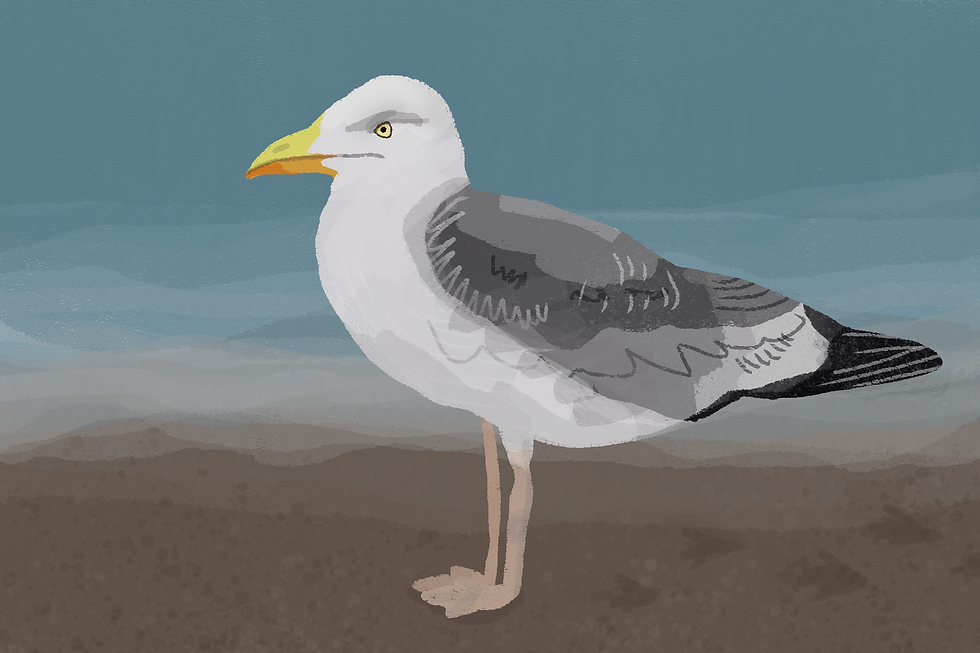American Herring Gull
- Anne Longman
- Jun 16
- 3 min read
Week of 06.16.25
You know them. You see them everywhere. You may, or may not love them. The American herring gull, more commonly referred to as just a seagull, has a notorious reputation. Although these birds naturally live on costal waterways and shorelines, they adapt to urban life better than almost any other bird species. Frequent visitors in supermarket parking lots, zoos, parks, and piers, seagulls learn to scavenge off human activity as a sustainable method of survival.
Seagulls are large white birds with grey wings and a black tail tip. They have a prominent, yellow beak and beady yellow eyes. They often move together in flocks and can be seen circling over shorelines in groups. Circling is energy saving behavior. Gulls ride thermal columns to cruise without needing to move their wings. When in flight, gull wings form the classic white V shape, making them easy to spot from a distance. In children's artwork, seagulls are usually depicted as a small v shape in the sky above water. These birds are best known for their call, a high pitched "yell" that is described as an alarm. Gulls use their loud voices to communicate with other members of their flock and conversely to ward off unwanted intruders.

Herring gulls eat a diet of fish, crabs, and invertebrates, like worms. They are also experts at stealing food! Seagulls are scavengers, meaning they will pick off the remains of another animal's food. They are also known to steal from humans. Videos of gulls walking into grocery stores only to leave with a bag of chips, attacking someone enjoying an ice cream cone on a pier, or even targeting a kid at the beach with a celery stick all flood the internet. Amazingly, they appear to be fearless.
Gulls are smarter than most people give them credit for. They have learned to recognize humans as a steady source of food, and wait for the opportune time to strike. A study from the University of Sussex discovered that herring gulls (American and otherwise) watch humans as they eat to learn what man-made products to look for. In the experiment, gulls were given the choice between green and blue bags of chips. They then watched as a nearby scientist ate from an identical packet. The gulls closely observed the human, and learned to eat from the same color the human selected.
Did you know? Gulls use human food to fish. They will place food in the water and bait fish to approach the surface.
A scientist on this study, Professor Paul Graham, says "While we know that animals learn from each other, we rarely see animals learning from a totally different species when it comes to food preferences... Gulls didn’t evolve to like chips. Over time they have had to learn to engage with humans in order to source food. It is therefore a sign of intelligence." Professor Graham also points out the importance of reducing waste, saying that birds rely on our trash to determine if they like human foods.
Herring gulls nest between April and August each year. They lay, on average, three eggs a year with the same partner. Herring gulls mate for life, and tend to return to the same nesting sites annually. Look out for these birds all over the continental United States this summer along beachfronts and waterways.
Have a great week!
----------------------------------------------------------
Sources:
https://www.audubon.org/birds-of-america/common-american-gull https://www.allaboutbirds.org/guide/American_Herring_Gull/id
Art by Anne Longman




One of my favorite books growing up was Jonathan Livingston Seagull